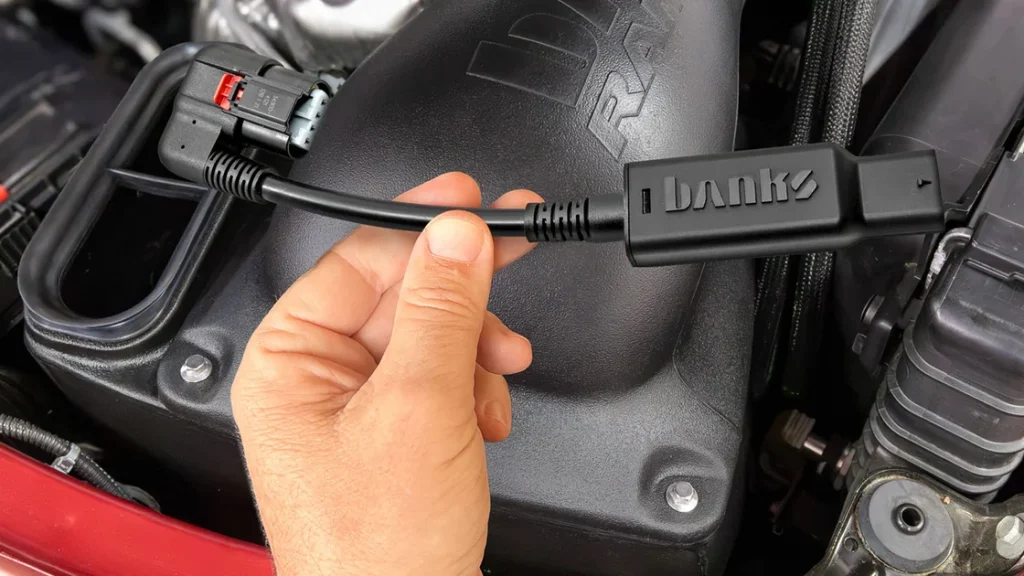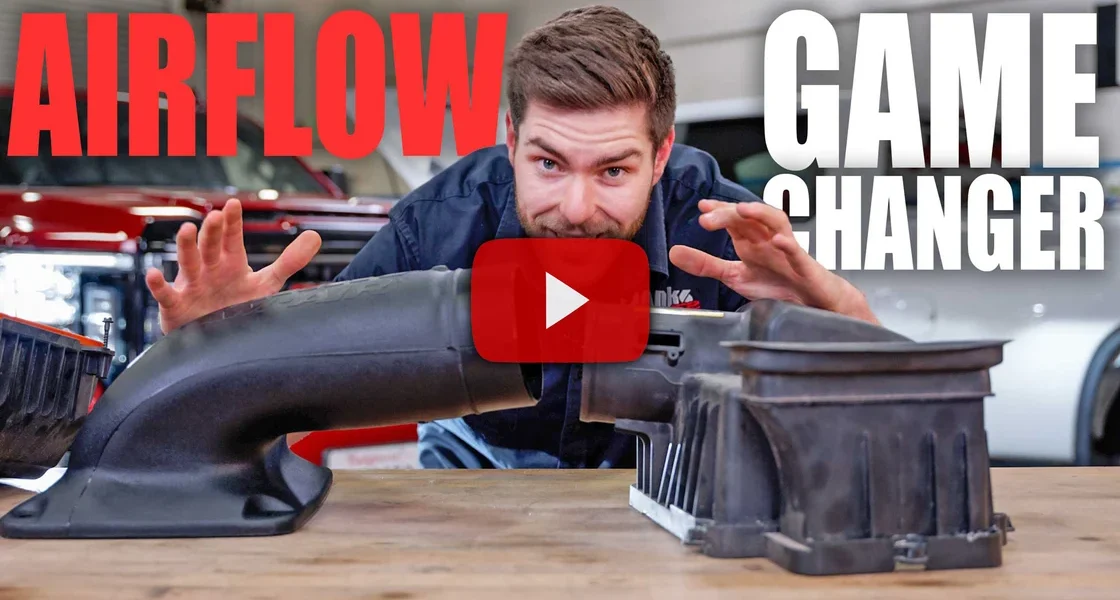Reinvented Duramax Intake: Banks Ram‑Air with Air Mass Control Module

If you own a 2020-25 Duramax, you can’t improve the performance of the air intake system without setting a check engine light—unless you have the patented Banks Air Mass Control Module. In this video, we reveal the hidden problem every 2020+ Duramax owner faces—and why all aftermarket intakes (except one) are just expensive cosmetic changes. Then, we walk you through how we engineered a solution.
Full Video Transcript
00:00 If you have a 2020 or newer Duramax, you cannot improve the performance of your air intake system unless you have this, the patented Banks air mass control module. I’m going to show you what this is and how it allows us to do what other intake manufacturers cannot. Without
00:16 this, your fancy looking airbox will end up performing the exact same as stock. We’ve entered a new era of intake air calibration. OEMs use a mass air flow sensor, otherwise known as a math sensor, to measure the mass or weight of the air entering your engine. And these
00:32 sensors are calibrated to a very specific cross-sectional area. And they’ve also become so precise, and the allowable windows of operation have narrowed so tightly that any deviation from stock results in an amber light on your dash and could potentially limit your power. Pressure is also a factor.
00:47 Modern trucks are equipped with the capability to measure pressure in the intake air system, or more specifically, air filter restriction. Too high a restriction, it thinks that your filter is clogged. Too low restriction, it thinks that the filter has a hole and
00:59 the engine is sucking in dirty air. But let’s take a look at the filter itself. I want to compare it against the Bank’s big ass filter. Not only is the Bank’s big ass filter serviceable, but it flows 58% more mass flow over the stock paper filter. Our job as performance engineers
01:18 is to satisfy the truck’s expectations while increasing air flow and therefore performance and efficiency. All other intake manufacturers have to match stock air flow and pressure. In other words, the area right at the MAF sensor has to stay the exact same size as stock. And
01:33 since you’re stuck with that size, all you’re paying for is cosmetics and a logo. If they try to increase flow, all they’ll end up with is a trouble code and reduced power. The Bank’s Ram Air, on the other hand, is 27% larger than stock. The massive cross-sectional area,
01:48 the large organic shape, and the free flowing filter reduces restrictions and choke points entering the turbo’s compressor inlet. This is how we solved it and increase performance. Without the bank’s air mass control module, this would not be possible. The module itself is programmed to know the
02:06 difference between the stock airbox and the ram air system. This means it knows how and when to adjust the data to match the truck’s stock air flow conditions. It keeps the truck’s ECM happy while allowing us to adjust the size and shape, increasing air density to the
02:19 turbo. But let me show you why this air density matters. Okay, starting with wheel horsepower. We’ve got our downshift and our upshift points here. So, this is the working zone of your truck that you’re actually going to see out on the road. On the X-axis, we’ve got engine speed and RPM. Y-axis is
02:34 wheel horsepower. So, let’s start with the stock baseline. And now focus on the lower end of the working zone. So, we’re going to overlay the ram air. And what we have here is newfound horsepower. The power is coming on sooner. And if you pair that with the Daringer tuner, it’s
02:48 coming on sooner than that. And you have the top end power. So in both scenarios, you have power sooner when it really matters at the bottom end of your working zone. And let’s take a look at torque. So similar scenario. We’ve got the same working zone, engine RPM X, and
03:02 wheel torque on the Y-axis. So stock baseline. And now focus on that same area. Again, the torque is coming on sooner. newfound power and if you pair that with the Daringer tuner sooner than that and you have the top end. So both scenarios you are getting the power and
03:18 the torque in the lower end where it matters most. Now I want to talk about something that few people actually discuss and that’s turbo shaft speed. So again we have that same working zone engine RPM X but turbo shaft speed Y. So the actual speed at which your turbocharger is spinning. And here we’re
03:35 looking at the hundreds of thousands stock baseline. As we take a look at the ram air, we are actually yielding a slower turbo speed. And what does that mean? It means that your turbo is working less. But why does that actually matter? Well, that means there is a
03:48 lower drive pressure. And drive pressure is the exhaust energy acting directly on the turbine wheel to spin the turbo. So, you’re delivering air more effectively, lowering back pressure, and allowing the engine to more efficiently convert that combustion energy to the wheels rather
04:02 than overcoming restrictions. Plus, since the turbo is spinning slower, you can reach your target boost pressure more quickly, meaning less turbo lag. And since we’re talking thousands of rotations per minute, the turbo will spin hundreds of millions of times less over the lifetime of your truck. So,
04:18 your turbo is going to last longer, which is a nice added benefit. Response, fuel economy, engine longevity, longer service intervals through your filter, and 50-state emissions compliance, all with no check engine lights. And it gets even better with the Daringer tuner,
04:33 Monster Ram turbo inlet, and the Banks boost tube upgrade kit. And they’re all available now.
Without our Air Mass Control technology, all other intakes are forced to match stock airflow and pressure, keeping the MAF sensor happy but doing nothing for power or efficiency. At best, you get a different look. At worst, you get derates, trouble codes, and a check engine light. With the Banks Ram-Air system, you get:
- 27% larger cross-sectional area at the MAF
- Reduced intake restriction (up to 45%)
- 58% more airflow through the filter
- Faster turbo spool and lower turbo RPMs — reducing wear over time
- No check engine lights thanks to our patented Air Mass Control Module
This system is more than plastic and branding — it’s engineered electronics, firmware, and calibration working in sync to unlock real gains. Available now for 2020-24 and coming soon for 2025.


